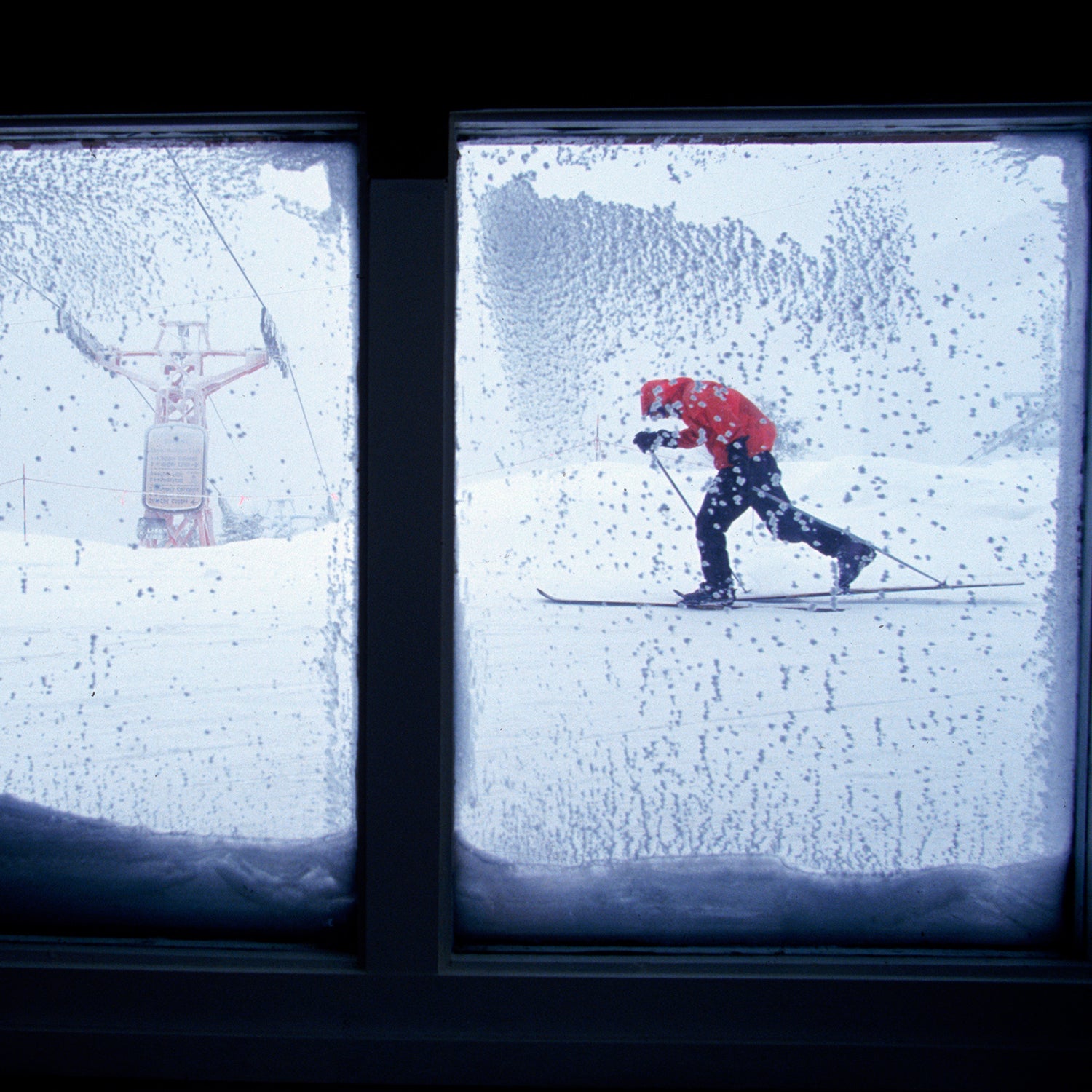On PresidentÔÇÖs Day 2015, Woods Valley Ski Area was poised for a banner weekend. After several drought years, the 25-acre, two-lift ski resort in Westernville, New York,╠řfinally had great snow for what is traditionally one of the ski industryÔÇÖs biggest weekends. Except that with an arctic air mass descending and wind chill figures expected to drop to minus 20, weather reporters across the Northeast cranked up the hype, . New York Governor Andrew Cuomo followed suit, officially warning citizens to ÔÇť.ÔÇŁ╠ř
Tim Woods, owner of Woods Valley, had been railing against such sensationalized reporting for years, writing to local broadcasters and imploring them not to label snow forecasts of more than six inches ÔÇťwarningsÔÇŁ or ÔÇťthreatsÔÇŁ and╠řwetter storms as ÔÇťheart-attack snow.ÔÇŁ╠ř
On the resortÔÇÖs Facebook page, Woods posted Emanuel LeutzeÔÇÖs famous painting of . ÔÇťImagine if George Washington had watched the local weather and decided the 'Real Feel'╠řtemp was just too cold to cross the Delaware on a frigid Christmas night in 1776,ÔÇŁ he wrote. ÔÇťThe battle of Trenton was a pivotal battle that turned the tide of the Revolutionary War. Stop believing the hype, dress for the weather outside, and come enjoy the best snow conditions weÔÇÖve seen in years.ÔÇŁ
Despite a sunny day with winds just four to six miles per hour and temps that rose to zeroÔÇöpretty decent conditions for Northeastern skiingÔÇöWoods' business was down 95 percent that day four years ago.╠ř╠ř
This January, with similarly good snow but another approaching polar vortex, Woods reposted his Washington Crossing the Delaware rant, but again, skier visits plunged.
Woods is one of several Northeastern ski area operators mobilizing against negative winter-weather reporting, both because of╠řits percieved╠řimpacts on their businesses as well as╠řon the general╠řpopulationÔÇÖs well-being. Local stations, they say, seldom report the actual winter temperature any more, relying instead on more dramatic wind chill or ÔÇťRealFeelÔÇŁ (a method╠řdeveloped by AccuWeather using factors including temperature, wind, humidity and others╠řto )╠řfigures. Normal winter weather is treated like a crisis. The Vermont Ski Areas Association has begun hosting ÔÇťweather summitsÔÇŁ for meteorologists, lobbying them to frame winter weather positively. Modern clothing is capable of making people comfortable in the worst possible conditions, the resort operators point out, and when time outdoors in any season is being proved to have tremendous health benefits,╠řthe last thing we should be doing is discouraging anyone from going outside.
Last year, we all laughed when footage went viral of a Weather Channel reporter dramatically bracing himself against allegedly ferocious winds during . That kind of over-dramatization is the norm in snow country, says Eric Friedman, marketing director at VermontÔÇÖs Mad River Glenn. ÔÇťReporters are dressing up in parkas in the studio and telling people to go outside only as a last resort. ItÔÇÖs like theyÔÇÖve all been exiled to Vermont from some tropical paradise. Lots of them really seem to hate winter.ÔÇŁ
Normal winter weather is treated like a crisis.
ÔÇťNegative weather reporting absolutely has an effect on ski area attendance,ÔÇŁ says Kelly Pawlak, president╠řof the National Ski Areas Association. ItÔÇÖs especially true, she says, for smaller resorts near population centers that rely on the casual, two- or three-times-per-year skier. ÔÇťA negative report on Thursday can scrap a lot of upcoming weekend ski plans for a resort that relies on day trips.ÔÇŁ
Last year, when Northeastern resorts experienced 45 days of below zero temperatures between Christmas and February, visits were significantly down. While itÔÇÖs difficult to parse which days correlate to particularly alarmist weather reporting, every resort representative I╠řspoke with╠řbelieved it was a significant compounding factor.
Most say the biggest culprit is extensive reliance on wind-chill figures, which can generate numbers 20 to╠ř30 degrees colder than the actual temperature. The problem, many have pointed out, is that not only is , it also . The formula to determine wind chill is based on a single study that measures the effects of a 3.1-mile-per-hour breeze in a wind tunnel on the faces of a small sample size of people.
According to meteorologist Russ Murley, who generates forecasts for dozens of resorts, from Sugarloaf to Telluride, for ,╠řwind chill doesnÔÇÖt take into account direct sunlight and is typically based on the highest forecasted wind gusts. Most of the time, he says, the wind only achieves its maximum gusts for a few minutes at a time. Plus,╠řwind chill is only capable of estimating the effects of weather on bare skin. Apart from the occasional closing-day bash in the spring, almost no one is skiing around naked. Modern gear like Gore-Tex, goggles, and helmets are well equipped to brush off cold and wind. ÔÇťItÔÇÖs not mittens made by mom and cotton long johns,ÔÇŁ says Murley,╠řa Maine resident and a lifelong skier.╠ř
In his own forecasting, Murley╠řnever emphasizes wind chill. He too believes that weather reporting has become increasingly dramatic for the sake of ratings. ÔÇťWhen I started, we delivered the weather without a lot of hype,ÔÇŁ he says. Now even winter storms have hurricane-style names. ÔÇťLast night here in Maine we had an ordinary winter storm, but millions of people in the Northeast are under weather advisories.ÔÇŁ
In╠řDecember, at one of its summits╠řcombat negative winter-weather reporting, the North American Snowsports Journalist Association organized an event for a dozen broadcast meteorologists at Stratton Mountain Resort. The three-day event featured technical climate presentations, but also a discussion, led by a North Face employee, on layering, windproofing, and other snowsports dress techniques. There was plenty of time for skiing and snowshoeing, too. The idea, says organizer Adam White, is to make weather journalists more comfortable with winter conditions and so╠řreduce their bias on-air or even Instagram. ÔÇťMeteorologists are surprisingly popular on social media,ÔÇŁ says White. ÔÇťEveryone wants to know about the weather.ÔÇŁ
There are plenty of discussions about how ironic it is that people are being scared away by cold weather reports in the short term, when in the long run, says White, the real threat to the ski business is loss of snow due to climate change. ÔÇťSustainability is a big push in the ski business,ÔÇŁ he says.╠ř
ItÔÇÖs not just about business and profit, either, says Woods. Ski areas are all about having fun outdoors and exercising. Their owners╠řloathe any influences that drive an╠řincreasingly inert population deeper indoors. As he╠řwrote to one local weatherman, ÔÇťNegative opinion and commentary will keep people in a hibernated state, inside and inactive.ÔÇŁ
When I spoke with Denis Esbaugh, president of Holiday Valley Ski Resort in Ellicotvile, New York,╠řlast month, schools in his region happened to be closed because of cold. ÔÇťTwenty years ago that never would have happened,ÔÇŁ he said. ÔÇťWe are far more risk averse today than we used to be.ÔÇŁ Twenty years ago, if schools were closed for any reason, he said, his resort would be full of kids skiing. Instead, four of his resortÔÇÖs 12 lifts were closed for lack of business.


